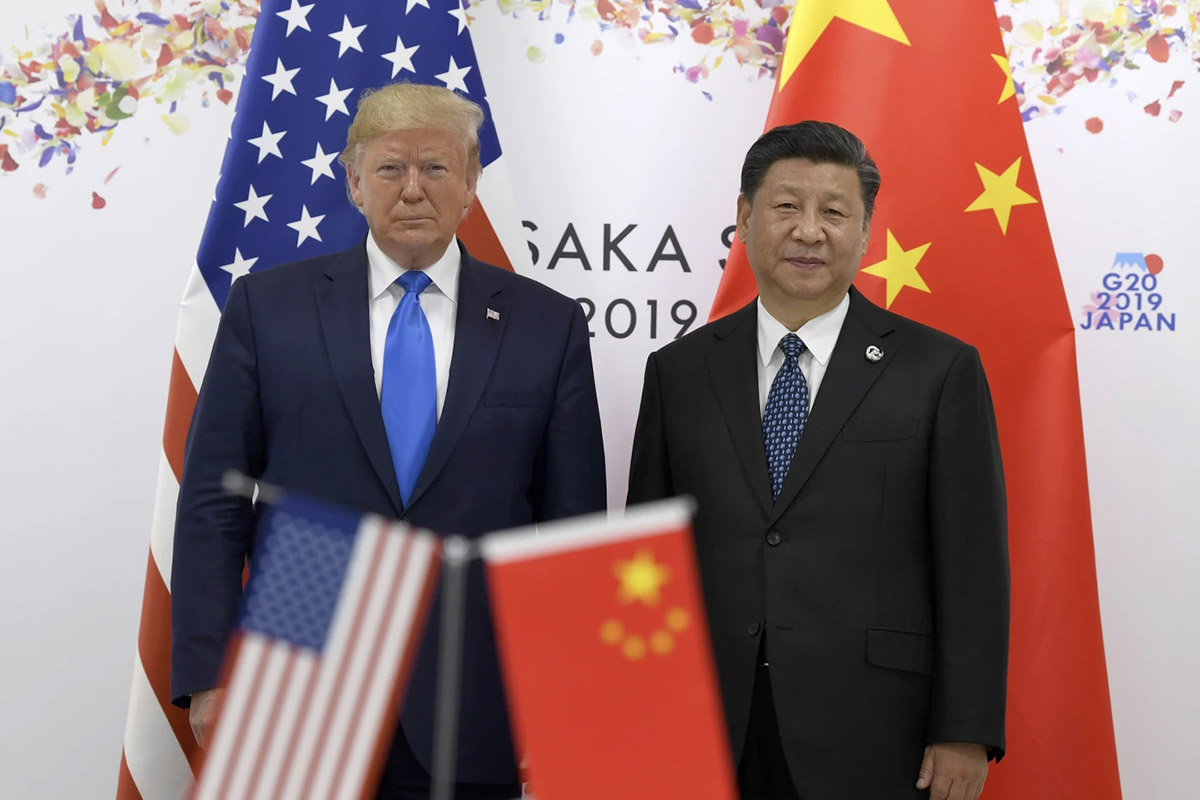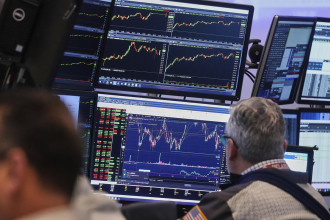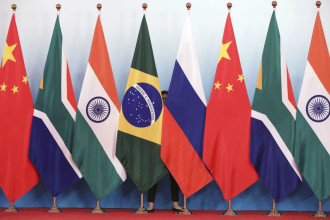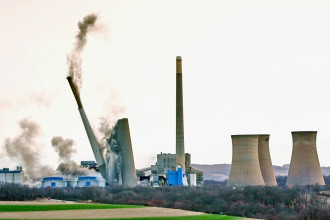
WASHINGTON: One travelled to the United States, the other to China. It was a sign of the times.
While the Swiss president was in Washington last week lobbying US officials over President Donald Trump’s threatened 31% tariff on Swiss goods, the Swiss foreign minister was in Beijing, expressing the nation’s willingness to strengthen cooperation with China and upgrade a free trade agreement.
As Trump’s trade war locks the world’s two largest economies on a collision course, America’s unnerved allies and partners are aligning with China to hedge their bets. This comes as Trump’s trade push disrupts a decade of American foreign policy — including his own from his first term — aimed at rallying the world to join the United States against China. It also risks handing Beijing more leverage in any eventual dialogue with the US administration.
With Trump claiming that countries are “kissing my ass” to negotiate trade deals on his terms or face stiff import taxes, Beijing is reaching out to nations far and wide. It portrays itself as a stabilising force and a predictable trading partner, both to cushion the impact of Trump’s tariffs and to forge stronger trade ties outside the US market.
“America and China are now locked in a fierce contest for global supremacy,” Singaporean Prime Minister Lawrence Wong said in an April 16 speech. “Both powers claim they do not wish to force countries to choose sides. But in reality, each seeks to draw others closer into their respective orbits.”
The tariffs on Chinese goods are off the charts
Trump has paused some of his steepest tariffs on most American partners for 90 days after global financial markets faltered. However, he has raised tariffs on Chinese goods to 145%, drawing rebukes from Beijing, which has vowed to “fight to the end.” US companies are warning of higher prices, meaning Trump could face both rising inflation and empty store shelves.
The scale of the taxes is already significantly affecting American imports, with shipping containers destined for the Port of Los Angeles down nearly 36% over the past two weeks, according to Port Optimiser, which tracks vessels. This has added urgency for both the US and China to bolster support from alternative partners.
While Trump administration officials suggest the president could ease the duty rates on Chinese goods at his discretion, there has been no indication he is considering a reduction. That, after all, could imply his protectionist policies were harming the American economy.
“They want to make a deal obviously,” Trump told reporters on Sunday, saying the US had gone “cold turkey” on trade with China. “Right now, they’re not doing business with us.”
The White House has framed any negotiations as being between the US president and Chinese President Xi Jinping, but neither leader appears willing to make the initial outreach without some form of concession. The two countries cannot even agree publicly on whether they are holding talks.
Earlier this month, Xi — on his first foreign trip this year — visited Vietnam, Malaysia, and Cambodia, resulting in mutual pledges for closer economic and trade ties. In Vietnam, which faces a 46% tariff from the US, Beijing and Hanoi agreed to strengthen industrial and supply chain cooperation. In Malaysia and Cambodia, Xi secured similar agreements. Cambodia faces a 49% tariff from the US, and Malaysia 24%.
Then there is Japan: Despite its long-standing enmity towards the nation that once colonised parts of it, the Chinese government has reached out to Tokyo and urged a coordinated response, according to Kyodo News.
China is digging in
China is ready to use coercive measures as well. A South Korean newspaper has reported that China is demanding South Korean businesses refrain from shipping goods containing China’s rare earth minerals to US defence companies or face likely sanctions.
Earlier this month, Beijing warned that no country should reach a deal with the US at China’s expense and vowed to take countermeasures in a “resolute and reciprocal manner” should such a situation arise.
Hal Brands, a senior fellow at the American Enterprise Institute in Washington, said China will “try to exploit Trump’s abrasive behaviour to make inroads with US allies and countries in the Global South.”
Some scholars argue Beijing is already gaining. “People lost the confidence, or even trust, for the United States, particularly for Donald Trump in the US. Not for China,” said Li Cheng, professor of political science at the University of Hong Kong. “So in that regard, China gains in the geopolitical landscape.”
In the latest Ipsos poll, for the first time, more people globally now say China has a positive impact on the world than the United States. The pollster cited the broad backlash to Trump’s tariffs.
Countries have to choose, but it is difficult
China is the world’s largest exporter and the US the largest importer. Total trade for China reached a record 43.85 trillion yuan (US$6 trillion) in 2024, and the country is the biggest trading partner for most of the world, including the European Union, Japan, South Korea, and the grouping of the 10 Southeast Asian countries known as ASEAN.
The US is the biggest destination for China’s exports, though China is only the third-largest trading partner with the US, behind Mexico and Canada. Total trade for the US last year was US$5.4 billion, with a record deficit of $1.2 trillion. For ASEAN countries, trade with the US totalled $477 billion in 2024, including $352 billion worth of goods sold to the US. However, China does more business with ASEAN.
Countries caught between the US and China are in “an impossible situation” because they need to stay economically connected both to China, “a source of a lot of their input and imports,” and to the powerhouse US market, said Matthew Goodman, director of the Greenberg Center for Geoeconomic Studies at the Council on Foreign Relations.
“They cannot choose one or the other, because they need both,” Goodman said.
In Europe, China is preparing to lift sanctions to revive a trade deal, according to the Hong Kong-based South China Morning Post. Chinese state media have been calling on European leaders to join China in safeguarding multilateralism.
Back in Beijing, Xi has been receiving foreign leaders. On Thursday, he told Kenya’s president that China’s market has always kept its door open to high-quality products from Kenya and that China encourages more capable Chinese enterprises to invest and start businesses in Kenya, according to the official Xinhua News Agency. On Wednesday, Xi met Azerbaijan’s president. Xi criticised the trade war as undermining the rights and interests of all countries.
Beijing sounds resolute
On Friday, when Xi presided over a key economic meeting, Beijing’s leadership struck a positive tone but acknowledged “increasing impact from external shocks” and “urged preparing for worst-case scenarios with sufficient planning,” according to Xinhua.
Wang Yiwei, a senior fellow at Beijing’s Center for China and Globalisation, said China, after dealing with Trump’s first term, is prepared for his latest tariff approach. “China is prepared for the worst,” Wang said, “and it is no longer living in the fantasy of globalisation.”
Victor Gao, vice president of the Center for China and Globalisation, said Beijing is prepared for decoupling. “What will be the end? It’s a complete halt, meaning no more US exports to China, no more China exports to the United States,” he said.
And, despite high costs to China’s economy, China will survive, Gao said. “For a country especially like China with a history of 5,000 years, what kind of people have we not seen? Whatever invaders, robbers, and barbarians,” Gao said. “But at the end, they all leave. They all disappear, all get defeated.”
By RSS/AP






